Showing Spotlights 1857 - 1864 of 2781 in category All (newest first):
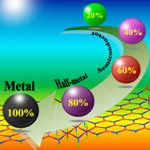 Researchers have been exploring boron nitride (BN) nanomaterials - from nanotubes to nanosheets and nanoribbons - and found similarities, but also differences to the the properties of the corresponding carbon nanomaterials. Motivated by the outstanding properties of graphene, the boron nitride single layer - a structural analogy of graphene - has been extensively studied both theoretically and experimentally, and has been experimentally realized. However, BN nanomaterials are wide-band-gap semiconductors, and their band structures are rather robust, and difficult to modulate, which is a substantial obstacle for their applications in nanoelectronic devices. Researchers have now shown that hydrogenation might be a simple approach to tune the band structure of graphene-like boron nitride structures.
Researchers have been exploring boron nitride (BN) nanomaterials - from nanotubes to nanosheets and nanoribbons - and found similarities, but also differences to the the properties of the corresponding carbon nanomaterials. Motivated by the outstanding properties of graphene, the boron nitride single layer - a structural analogy of graphene - has been extensively studied both theoretically and experimentally, and has been experimentally realized. However, BN nanomaterials are wide-band-gap semiconductors, and their band structures are rather robust, and difficult to modulate, which is a substantial obstacle for their applications in nanoelectronic devices. Researchers have now shown that hydrogenation might be a simple approach to tune the band structure of graphene-like boron nitride structures.
Apr 6th, 2010
 Taking the patent land grab to a new level, the government of Greece today, April 1, filed a patent and trademark application for the term nanotechnology with the European Patent Office. The country is thereby seeking the right to prevent third parties from commercially exploiting these and related terms without paying royalties. Notwithstanding the moral high ground the Greek government is trying to occupy, observers note that the real reason for this surprising move is very simple and very down-to-earth: money. Cash-strapped Greece, on the brink of bankruptcy, is desperate for revenues. Greece's massive debt problem has shaken the entire euro zone and undermined the shared currency. Greece's public debt is so high that the country could default - with potentially dire results for the Euro.
Taking the patent land grab to a new level, the government of Greece today, April 1, filed a patent and trademark application for the term nanotechnology with the European Patent Office. The country is thereby seeking the right to prevent third parties from commercially exploiting these and related terms without paying royalties. Notwithstanding the moral high ground the Greek government is trying to occupy, observers note that the real reason for this surprising move is very simple and very down-to-earth: money. Cash-strapped Greece, on the brink of bankruptcy, is desperate for revenues. Greece's massive debt problem has shaken the entire euro zone and undermined the shared currency. Greece's public debt is so high that the country could default - with potentially dire results for the Euro.
Apr 1st, 2010
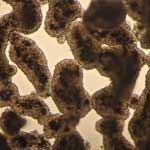 Mass culture of cell lines has long been fundamental to the manufacture of viral vaccines and many products of biotechnology. More recently it also has become an essential tool in stem cell research and tissue engineering. Most conventional petri dish based cell culture techniques produce monolayers cell growth that is missing essential cellular functions that are present in living organisms; gene expression, signaling and morphology can be different and this compromises its clinical relevance. It limits their potential to predict the cellular responses of real organisms. In order to develop cellular models that mimic the functions of living tissues, researchers have therefore been trying to move from two-dimensional to three-dimensional cultures. A recent example is a technique that uses magnetic levitation of cells in the presence of a hydrogel consisting of gold, magnetic iron oxide nanoparticles and filamentous bacteriophage. By spatially controlling the magnetic field while cells divide and grow, the geometry of the cell mass can be manipulated, and multicellular clustering of different cell types in co-culture can be achieved.
Mass culture of cell lines has long been fundamental to the manufacture of viral vaccines and many products of biotechnology. More recently it also has become an essential tool in stem cell research and tissue engineering. Most conventional petri dish based cell culture techniques produce monolayers cell growth that is missing essential cellular functions that are present in living organisms; gene expression, signaling and morphology can be different and this compromises its clinical relevance. It limits their potential to predict the cellular responses of real organisms. In order to develop cellular models that mimic the functions of living tissues, researchers have therefore been trying to move from two-dimensional to three-dimensional cultures. A recent example is a technique that uses magnetic levitation of cells in the presence of a hydrogel consisting of gold, magnetic iron oxide nanoparticles and filamentous bacteriophage. By spatially controlling the magnetic field while cells divide and grow, the geometry of the cell mass can be manipulated, and multicellular clustering of different cell types in co-culture can be achieved.
Mar 31st, 2010
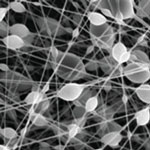 The concept of self-healing has become a popular theme in the field of material science. The whole concept of 'smart' materials that react on external impact - pH, humidity changes, or distortion of the coating integrity - and repair themselves has experienced a tremendous boost with the advent of nanotechnology. The nanoscale multilayer structure of a coating, in which the components are integrated and mutually reactive, is a main point in sophisticated and strong corrosion protection. Researchers have now proposed a new approach to self-healing polymer coating systems based on an electrospun coaxial healing agent. Electrospinning offers a number of unique opportunities. Most significantly, the location and concentration of the healing component can be spatially varied.
The concept of self-healing has become a popular theme in the field of material science. The whole concept of 'smart' materials that react on external impact - pH, humidity changes, or distortion of the coating integrity - and repair themselves has experienced a tremendous boost with the advent of nanotechnology. The nanoscale multilayer structure of a coating, in which the components are integrated and mutually reactive, is a main point in sophisticated and strong corrosion protection. Researchers have now proposed a new approach to self-healing polymer coating systems based on an electrospun coaxial healing agent. Electrospinning offers a number of unique opportunities. Most significantly, the location and concentration of the healing component can be spatially varied.
Mar 29th, 2010
 It has proven difficult to directly manufacture functional nanostructures and nanodevices with predetermined designs using bottom-up processes alone. So far, developing top-down machining techniques capable of fabricating structural/functional nanostructures and nanodevices appears to be indispensable, but mechanical machining tools with nanometer precision are still lacking. A grand challenge in nanotechnology is to machine three-dimensional nanostructures in a controllable and reproducible fashion. That begs the question if traditional top-down mechanical machining can also be realized at the nanoscale. So far, the conventional wisdom has been that traditional top-down mechanical machining like cutting and milling using a lathe is impossible at the nanoscale. Nanotechnologists considered most of the traditional top-down approaches as not applicable for fabricating nanostructure and nanodevices. However, as it turns out, there still is room at the bottom for traditional mechanical machining.
It has proven difficult to directly manufacture functional nanostructures and nanodevices with predetermined designs using bottom-up processes alone. So far, developing top-down machining techniques capable of fabricating structural/functional nanostructures and nanodevices appears to be indispensable, but mechanical machining tools with nanometer precision are still lacking. A grand challenge in nanotechnology is to machine three-dimensional nanostructures in a controllable and reproducible fashion. That begs the question if traditional top-down mechanical machining can also be realized at the nanoscale. So far, the conventional wisdom has been that traditional top-down mechanical machining like cutting and milling using a lathe is impossible at the nanoscale. Nanotechnologists considered most of the traditional top-down approaches as not applicable for fabricating nanostructure and nanodevices. However, as it turns out, there still is room at the bottom for traditional mechanical machining.
Mar 26th, 2010
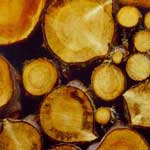 Bioethanol, unlike petroleum, is a form of renewable energy that can be produced from common agricultural feedstocks such as sugar cane or corn. Ethanol is already widely used in siome countries, mainly as biofuel additive for gasoline. The tremendous hype about bioethanol in the past few years has now been followed by a debate about how useful bioethanol actually can replace gasoline. Concerns about its production and use relate to the large amount of arable land required for crops, as well as the energy and pollution balance of the whole cycle of ethanol production. Recent developments with cellulosic ethanol production and commercialization may allay some of these concerns. It offers the promise that any plant material, from grass to wood, and not just edible crops, could be used in the production of ethanol fuels. Consequently, cellulosic ethanol could allow ethanol fuels to play a much bigger role in the future than previously thought. With regard to cellulosic production and commercialization, bioethanol production from woody biomass by enzymatic hydrolysis of cellulosic components and fermentation has attracted much attention.
Bioethanol, unlike petroleum, is a form of renewable energy that can be produced from common agricultural feedstocks such as sugar cane or corn. Ethanol is already widely used in siome countries, mainly as biofuel additive for gasoline. The tremendous hype about bioethanol in the past few years has now been followed by a debate about how useful bioethanol actually can replace gasoline. Concerns about its production and use relate to the large amount of arable land required for crops, as well as the energy and pollution balance of the whole cycle of ethanol production. Recent developments with cellulosic ethanol production and commercialization may allay some of these concerns. It offers the promise that any plant material, from grass to wood, and not just edible crops, could be used in the production of ethanol fuels. Consequently, cellulosic ethanol could allow ethanol fuels to play a much bigger role in the future than previously thought. With regard to cellulosic production and commercialization, bioethanol production from woody biomass by enzymatic hydrolysis of cellulosic components and fermentation has attracted much attention.
Mar 25th, 2010
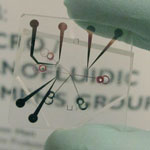 Freshwater could become the oil of the 21st century - scarce, expensive and fought over. While over 70 per cent of the Earth's surface is covered by water, most of it is unusable for human consumption. Technological advances have made desalination and demineralization feasible - albeit expensive - solutions for increasing the world's supply of freshwater. However, nanotechnology- based water purification devices have the potential to transform the field of desalination. Researchers have now demonstrated a new, efficient and fouling-free desalination process based on the ion concentration polarization (ICP) phenomenon - a fundamental electrochemical transport phenomenon that occurs when an ion current is passed through ion-selective membranes - for direct desalination of sea water.
Freshwater could become the oil of the 21st century - scarce, expensive and fought over. While over 70 per cent of the Earth's surface is covered by water, most of it is unusable for human consumption. Technological advances have made desalination and demineralization feasible - albeit expensive - solutions for increasing the world's supply of freshwater. However, nanotechnology- based water purification devices have the potential to transform the field of desalination. Researchers have now demonstrated a new, efficient and fouling-free desalination process based on the ion concentration polarization (ICP) phenomenon - a fundamental electrochemical transport phenomenon that occurs when an ion current is passed through ion-selective membranes - for direct desalination of sea water.
Mar 22nd, 2010
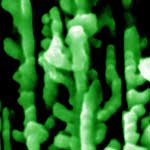 Materials that can produce electricity are at the core of piezoelectric research and the vision of self-powering machines and devices. With the emergence of nanotechnology and the use of nanomaterials, the field of piezoelectrics and nanopiezotronics has experienced a lot of new and interesting research efforts. A recent study, for instance, has demonstrated that the small vibrational energy waste generated in the environment from noise, wind power, running water, or water wave action can be scavenged or harvested as a driving force for direct water splitting. The researchers propose a new piezoelectrochemical mechanism for the direct conversion of mechanical energy to chemical energy and subsequently the splitting of water into hydrogen and oxygen.
Materials that can produce electricity are at the core of piezoelectric research and the vision of self-powering machines and devices. With the emergence of nanotechnology and the use of nanomaterials, the field of piezoelectrics and nanopiezotronics has experienced a lot of new and interesting research efforts. A recent study, for instance, has demonstrated that the small vibrational energy waste generated in the environment from noise, wind power, running water, or water wave action can be scavenged or harvested as a driving force for direct water splitting. The researchers propose a new piezoelectrochemical mechanism for the direct conversion of mechanical energy to chemical energy and subsequently the splitting of water into hydrogen and oxygen.
Mar 19th, 2010
 Researchers have been exploring boron nitride (BN) nanomaterials - from nanotubes to nanosheets and nanoribbons - and found similarities, but also differences to the the properties of the corresponding carbon nanomaterials. Motivated by the outstanding properties of graphene, the boron nitride single layer - a structural analogy of graphene - has been extensively studied both theoretically and experimentally, and has been experimentally realized. However, BN nanomaterials are wide-band-gap semiconductors, and their band structures are rather robust, and difficult to modulate, which is a substantial obstacle for their applications in nanoelectronic devices. Researchers have now shown that hydrogenation might be a simple approach to tune the band structure of graphene-like boron nitride structures.
Researchers have been exploring boron nitride (BN) nanomaterials - from nanotubes to nanosheets and nanoribbons - and found similarities, but also differences to the the properties of the corresponding carbon nanomaterials. Motivated by the outstanding properties of graphene, the boron nitride single layer - a structural analogy of graphene - has been extensively studied both theoretically and experimentally, and has been experimentally realized. However, BN nanomaterials are wide-band-gap semiconductors, and their band structures are rather robust, and difficult to modulate, which is a substantial obstacle for their applications in nanoelectronic devices. Researchers have now shown that hydrogenation might be a simple approach to tune the band structure of graphene-like boron nitride structures.
 Subscribe to our Nanotechnology Spotlight feed
Subscribe to our Nanotechnology Spotlight feed





